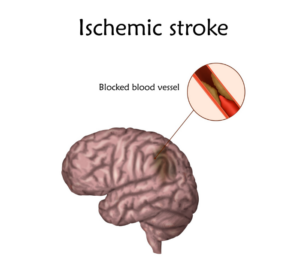
It has long been recognized that suffering one stroke significantly increases one’s risk for having another stroke in the future when the original stroke is caused by blocked blood vessels or transient ischemic attack (TIA). Preventing additional strokes requires that we identify the cause for the original stroke so that we can strategically manage the risk of a second stroke. The American Heart Association and American Stroke Association has previously provided guidelines on how to manage this stroke risk in patients. This guideline has now been updated and published in the journal Stroke.
Good eating habits, regular exercise, and avoiding smoking are good ways to avoid stroke. However, in the new guideline, experts point to the importance of quickly identifying the cause of the first stroke. Specifically, they call for diagnostic processes to determine the cause within 48 hours of symptom onset for an initial stroke or TIA. They also point to the need to screen and diagnose irregular heart rhythms and begin blood thinning therapies.
When patients survive their first stroke, the guidelines recommend several other longer term secondary prevention strategies. These prevention measures include managing vascular risks, particularly by treating high blood pressure, as well as managing type 2 diabetes, triglyceride levels, and cholesterol.
Specific lifestyle changes, such as quitting smoking, are also recommended. In terms of diet, experts suggest avoiding salt or following a Mediterranean diet. They also advise that physically capable patients exercise at a moderate intensity level for at least 10 minutes 4 times each week or high intensity for 20 minutes 2 times each week.
Importantly, the new guideline attempts to make it easier for healthcare professionals to determine the best way to care for stroke patients to ensure that they stay healthy and do not suffer a second stroke. This approach also highlights the need for personalized care that incorporates patients’ wishes and preferences. Using this strategy, physicians and surgeons will have more information to determine which therapies to prescribe and which surgeries to pursue in cases where these interventions may improve outcomes.
Reference
Kleindorfer DO, Towfighi A, Chaturvedi S, et al. 2021 Guideline for the Prevention of Stroke in Patients With Stroke and Transient Ischemic Attack: A Guideline From the American Heart Association/American Stroke Association. Stroke. Published online May 24, 2021:STR0000000000000375. doi:10.1161/STR.0000000000000375
